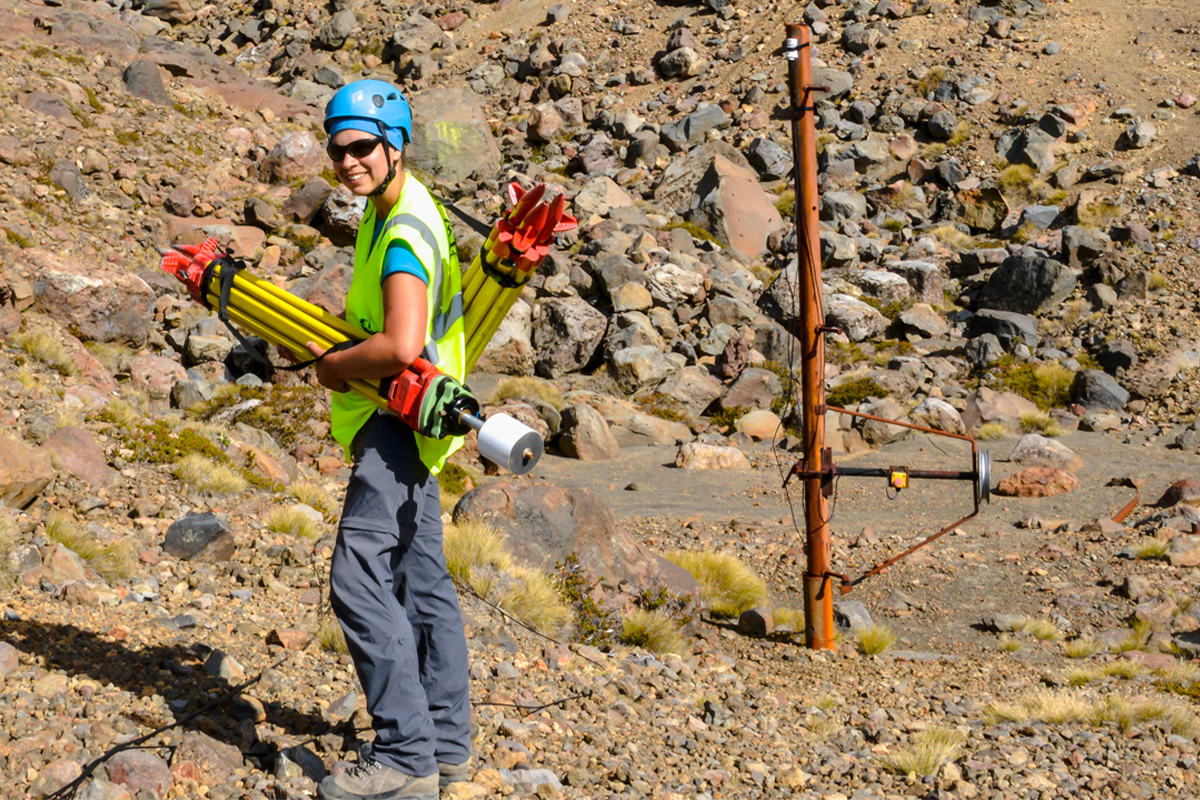All Categories
Featured
Table of Contents
Career Guide: Geophysicist in Midland Aus 2020

The main design for the radial structure of the interior of the Earth is the preliminary referral Earth model (PREM). Some parts of this design have actually been updated by recent findings in mineral physics (see post-perovskite) and supplemented by seismic tomography. The mantle is generally made up of silicates, and the borders between layers of the mantle follow phase shifts.

This makes plate tectonics possible. Schematic of Earth's magnetosphere. The solar wind flows from left to right. If a world's magnetic field is strong enough, its interaction with the solar wind forms a magnetosphere. Early space probes mapped out the gross measurements of the Earth's magnetic field, which extends about 10 Earth radii towards the Sun.
Inside the magnetosphere, there are reasonably thick areas of solar wind particles called the Van Allen radiation belts. Geophysical measurements are typically at a specific time and location. Accurate measurements of position, together with earth contortion and gravity, are the province of geodesy. While geodesy and geophysics are separate fields, the two are so closely connected that lots of clinical companies such as the American Geophysical Union, the Canadian Geophysical Union and the International Union of Geodesy and Geophysics encompass both.
Geology And Geophysics - Careers And Employment in Dalkeith Oz 2020
, combines huge collaborates and the local gravity vector to get geodetic coordinates. This technique only provides the position in 2 coordinates and is more challenging to utilize than GPS.
Relative positions of two or more points can be identified using very-long-baseline interferometry. Gravity measurements ended up being part of geodesy due to the fact that they were required to related measurements at the surface area of the Earth to the referral coordinate system. Gravity measurements on land can be used gravimeters released either on the surface area or in helicopter flyovers.
, which are studied through geophysics and area physics.
Geology Careers: Degree Requirements, Cost & Salary in Midland Oz 2020

Considering that geophysics is worried about the shape of the Earth, and by extension the mapping of features around and in the world, geophysical measurements include high accuracy GPS measurements. These measurements are processed to increase their accuracy through differential GPS processing. As soon as the geophysical measurements have actually been processed and inverted, the interpreted results are plotted using GIS.
Many geophysics business have created internal geophysics programs that pre-date Arc, GIS and Geo, Soft in order to meet the visualization requirements of a geophysical dataset. Expedition geophysics is used geophysics that often utilizes remote picking up platforms such as; satellites, aircraft, ships, boats, rovers, drones, borehole picking up equipment, and seismic receivers.
For instance, aeromagnetic data (airplane collected magnetic information) gathered utilizing standard fixed-wing airplane platforms must be corrected for electro-magnetic eddy currents that are created as the airplane moves through Earth's magnetic field. There are also corrections related to changes in measured possible field strength as the Earth rotates, as the Earth orbits the Sun, and as the moon orbits the Earth.
Geophysical Engineerskills And Knowledge in Hillman Aus 2023
Signal processing includes the correction of time-series data for unwanted sound or errors introduced by the measurement platform, such as airplane vibrations in gravity information. It also involves the decrease of sources of sound, such as diurnal corrections in magnetic data. In seismic information, electro-magnetic information, and gravity information, processing continues after error corrections to consist of computational geophysics which result in the last analysis of the geophysical information into a geological analysis of the geophysical measurements Geophysics became a separate discipline just in the 19th century, from the crossway of physical geography, geology, astronomy, meteorology, and physics.
The magnetic compass existed in China back as far as the fourth century BC. It was utilized as much for feng shui as for navigation on land. It was not up until good steel needles might be forged that compasses were used for navigation at sea; prior to that, they might not keep their magnetism long enough to be useful.
By looking at which of 8 toads had the ball, one might identify the direction of the earthquake. It was 1571 years prior to the first style for a seismoscope was released in Europe, by Jean de la Hautefeuille. It was never constructed. Among the publications that marked the start of modern-day science was William Gilbert's (1600 ), a report of a series of meticulous experiments in magnetism.
Geologists And Geophysicists in Bellevue Western Australia 2022
In 1687 Isaac Newton released his, which not only laid the structures for classical mechanics and gravitation Also discussed a range of geophysical phenomena such as the tides and the precession of the equinox. The first seismometer, an instrument capable of keeping a continuous record of seismic activity, was constructed by James Forbes in 1844. Dietmar; Sdrolias, Maria; Gaina, Carmen; Roest, Walter R. (April 2008). "Age, spreading rates, and spreading out asymmetry of the world's ocean crust". Geochemistry, Geophysics, Geosystems. 9 (4 ): Q04006. Bibcode:2008 GGG ... 9. 4006M. doi:10. 1029/2007GC001743. S2CID 15960331. "Earth's Inconstant Magnetic Field". science@nasa. National Aeronautics and Area Administration. 29 December 2003. Recovered 13 November 2018.
Runcorn, S.K, (editor-in-chief), 1967, International dictionary of geophysics:. Pergamon, Oxford, 2 volumes, 1,728 pp., 730 fig Geophysics, 1970, Encyclopaedia Britannica, Vol. Introduction to seismology (2nd ed.).
Table of Contents
Latest Posts
Greeley-evans Area 3d Geophysical Survey in Bicton Australia 2022
Airborne Geophysical Methods in Bateman Western Australia 2022
Integrated Geophysical Surveys For The Safety in Beeliar Australia 2021
More
Latest Posts
Greeley-evans Area 3d Geophysical Survey in Bicton Australia 2022
Airborne Geophysical Methods in Bateman Western Australia 2022
Integrated Geophysical Surveys For The Safety in Beeliar Australia 2021